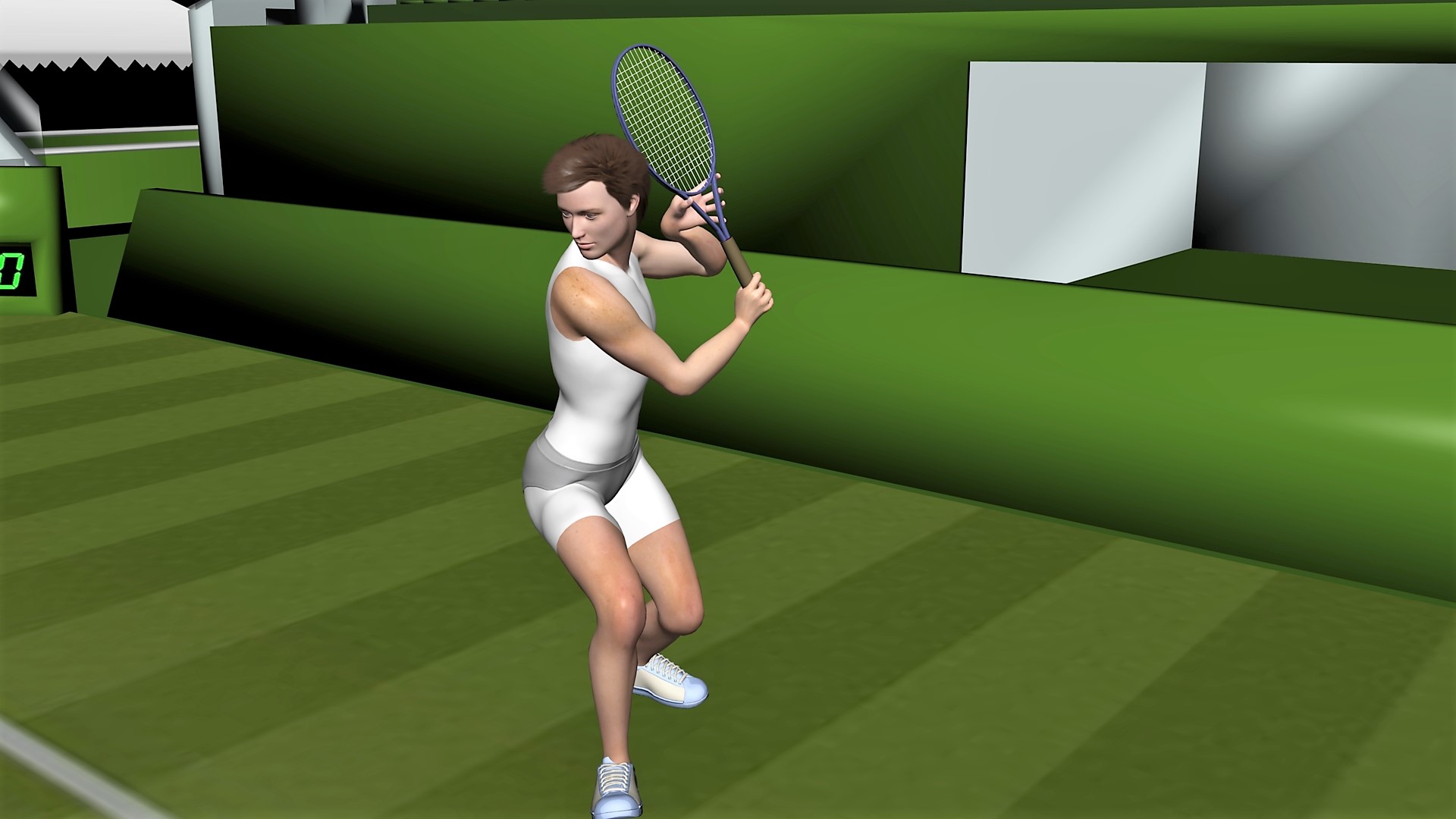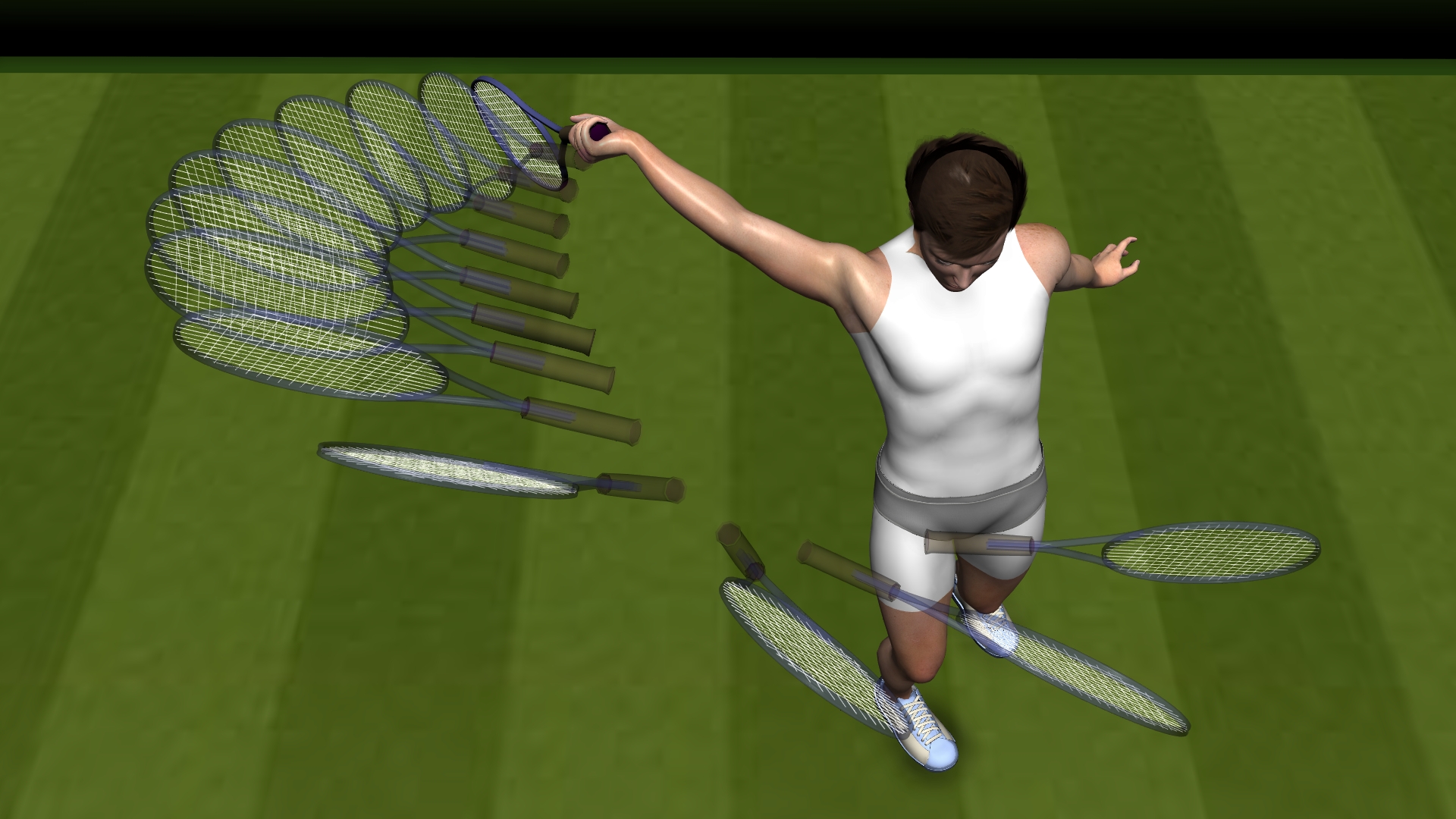One Handed Topspin Backhand
If you want a spirited debate, talk to a teaching pro about the relative advantages of the one-handed versus two-handed topspin backhands. I have used both. Each has its advantages, and each will disappoint you. Try to run down a wide ball with the two-hander, and you will often find it beyond your reach. Try to deal with a 100 mph serve and the one hander suffers by comparison. Most kids are taught the two-hander, and most top pros play with it, but there are still plenty of holdouts who hit with one. For those having trouble deciding, I have outlined the pros and cons of each stroke here.
The challenge with the one-handed topspin backhand (1HTSB) when compared to the forehand is that much of the power, control and topspin in the backhand is generated by supination of the wrist rather than pronation. Pronation is the fundamental source of power in most ball sports, and it is both strong and natural. Supination is weak by comparison and remember that power and consistency are closely related. Another issue with the one-hander is the windup. The one-handed topspin is the longest stroke in tennis other than the serve. Preparation is the key to the success of the stroke, and it can't be rushed. If you are in a hurry, hit a slice. That brings up yet another issue - the pose. Most pros who use a one-handed backhand use the same pose for the topspin as the slice. That way they can delay the decision of which way to go, slice or topspin, up to the very last second. No time? Slide into the slice. Otherwise, wind up the topspin and let fly. Reusing the pose between two very different strokes can have disadvantages because of the role of the pose as the trigger for the thalamus is to play back a certain stroke sequence. If the thalamus gets confused you can find that one or both of your backhands is disrupted (see Top Slice Syndrome). Pros do not seem to have as much of a problem with this as us mortals, but the choice of a pose is not to be taken lightly.

Foundations
The Pose
The forgoing discussions notwithstanding, the pros who hit one-handed topspin backhands reuse the slice backhand pose for the topspin. The position is low elbow, high racket head, slightly laid back racket and 60% cocked, dorsiflexed wrist. The left hand is gently clutching the throat of the racket. You get into this position via a quick and violent unit turn that affords just enough time to get the hips and shoulders turned and the feet into a closed stance.
- Functions of the 1HBHTS Pose
- starting point for the lock
- endpoint for the unit turn
- triggers the stroke sequence in the thalamus
The Lock
From the pose one enters the lock phase by palmar-flexing the wrist, gently pulling-dropping-guiding the racket head, then the entire racket-arm complex down and back behind the left hip until the racket is parallel to the back fence with the racket head slightly below the wrist. One must relax completely by the end of this phase and should time it such that it ends with the power wave rotating the shoulders and dragging the racket through the load phase into the lag. The lock is yet another somewhat time-consuming process that is nonetheless essential to set the racket up for storing control and spin forces during the load phase and getting the racket far enough behind the body to allow you to generate power during an extended lag phase. If the wrist does not palmer-flex during this phase, the ball will go over the fence. If the arm doesn't relax then, stretch-shortening will not occur during the load, and there will be less spin and no directional control delivered upon contact.

